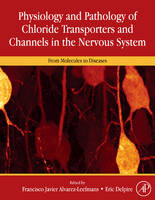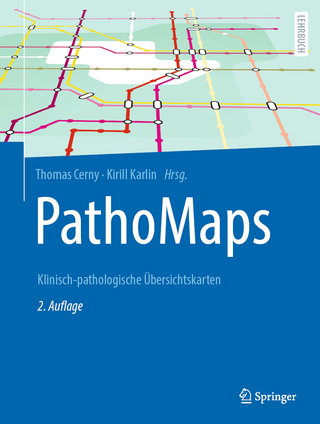
Physiology and Pathology of Chloride Transporters and Channels in the Nervous System
Academic Press Inc (Verlag)
978-0-12-374373-2 (ISBN)
The importance of chloride ions in cell physiology has not been fully recognized until recently, in spite of the fact that chloride (Cl-), together with bicarbonate, is the most abundant free anion in animal cells, and performs or determines fundamental biological functions in all tissues. For many years it was thought that Cl- was distributed in thermodynamic equilibrium across the plasma membrane of most cells. Research carried out during the last couple of decades has led to a dramatic change in this simplistic view. We now know that most animal cells, neurons included, exhibit a non-equilibrium distribution of Cl- across their plasma membranes. Over the last 10 to 15 years, with the growth of molecular biology and the advent of new optical methods, an enormous amount of exciting new information has become available on the molecular structure and function of Cl- channels and carriers. In nerve cells, Cl- channels and carriers play key functional roles in GABA- and glycine-mediated synaptic inhibition, neuronal growth and development, extracellular potassium scavenging, sensory-transduction, neurotransmitter uptake and cell volume control. Disruption of Cl- homeostasis in neurons underlies pathological conditions such as epilepsy, deafness, imbalance, brain edema and ischemia, pain and neurogenic inflammation. This book is about how chloride ions are regulated and how they cross the plasma membrane of neurons. It spans from molecular structure and function of carriers and channels involved in Cl- transport to their role in various diseases.
Research Interests Research in his laboratory focuses on the molecular and cellular physiology of carrier protein molecules that actively transport chloride ions (Cl-) across the plasma membrane of neurons and epithelial cells. Specifically, they study some members of the cation-coupled-chloride contransporter gene/protein family SLC12A: the Na+, K+, 2 Cl- cotransporters (NKCC1 and NKCC2) and the K+-Cl- cotransporters (KCC1, 2, 3 and 4). These carrier proteins play key roles in: intracellular Cl- homeostasis in neurons, GABA- and glycine-mediated synaptic signaling, neuronal development, sensory transduction including nociception, transepithelial salt transport, cell water volume control, and extracellular K+ scavenging. Not surprisingly, altered function of these proteins underlies several pathologies and hence they have become significant targets for therapeutic interventions and translational research. To study the function of these proteins we use state-of-the-art live-cell imaging microscopy and fluorescent probes for measuring and manipulating intracellular ions and water in dissociated neurons and epithelial cells. Some of these optical methods have been developed in their lab, and are used in conjunction with molecular methods, knockout models, and several microanatomical techniques. Their current research involves two projects: Mechanisms regulating intracellular chloride in primary afferent neurons and their impact on GABA-mediated presynaptic inhibition and sensory transduction. This project aims at understanding the molecular mechanisms that determine intracellular Cl- concentration in primary afferent neurons, their regulation, and the role they play in presynaptic inhibition, acute somatic pain, neurogenic inflammation and proprioception. Roles of cation-coupled-chloride contransporters of choroid plexus epithelial cells in the regulation of cerebrospinal fluid ion composition. The choroid plexus epithelial cells (CPECs) form the blood-cerebrospinal fluid (CSF) barrier. CPECs secrete CSF and regulate its electrolyte composition. Regulation of CSF ion levels is fundamental for maintaining normal brain function. The overarching goal of this project is to understand how NKCC1, KCCs and aquaporins control the ion composition of the cerebrospinal fluid. Current emphasis is on the molecular and cellular mechanisms used by CPECs to regulate and maintain the CSF K+ concentration, a fundamental problem of broad physiological significance. CSF composition has a major impact on the fluid microenvironment of neurons and glial cells, and vice versa. Extracellular K+ homeostasis is critical for normal brain function; small changes in extracellular K+ profoundly affect neuronal excitability and osmotic water balance of glial cells and neurons. Dr. Eric Delpire teaches at the Vanderbilt University, Nashville, USA
Section I Overview of chloride transporters and channels
1. Chloride Channels: An Historical Perspective by H. Criss Hartzell
2. Sodium-Coupled Chloride Cotransporters: Discovery and Newly Emerging Concepts by John Russell
3. Pathophysiology of the K+-Cl- Cotransporters: Paths to Discovery and Overview by John S. Gibson, J. Clive Ellory, Norma C. Adragna and Peter K. Lauf
4. From Cloning to Structure, Function, and Regulation of Chloride-dependent and Independent Bicarbonate Transporters by Michael F. Romero, Min-Hwang Chang and David Mount
5. Thermodynamics and Kinetics of chloride transport in Neurons: An Outline by F. Javier Alvarez-Leefmans and Eric Delpire
Section II Current methods for studying chloride regulation
6. Chemical and GFP-based Fluorescent Chloride Indicators by Alan S. Verkman
7. Clomeleon, a Genetically-encoded Chloride Indicator by Ken Berglund, Thomas Kuner and George J. Augustine
8. Gramicidin Perforated Patch by Norio Akaike
9. Measuring Electroneutral Chloride-dependent Ion Fluxes in Heterologous Expression Systems by Kenneth
Gagnon
10. Knockout models of cation chloride cotransporters by Nicole Garbarini and Eric Delpire
Section III From cloning to structure, function and regulation of chloride channels
11. The NKCC and NCC genes: An in silico view by Mauricio Di Fulvio and F. Javier Alvarez-Leefmans
12. The ClC Family of Chloride Channels and Transporters by Tobias Stauber, Gaia Novarino and Thomas J. Jentsch
13. Calcium-Activated Chloride Channels by Fiona Britton, Normand Leblanc and James L. Kenyon
14. GABAA Receptor Channels by Robert L. Macdonald and Emmanuel J. Botzolakis
15. The Puzzles of Volume-Activated Anion Channels by Yasunobu Okada, Kaori Sato, Abduqodir H. Toychiev, Makoto Suzuki, Amal K. Dutta, Hana Inoue and Ravshan Z. Sabirov
16. The Sodium-Dependent Chloride Cotransporters by Gerardo Gamba
17. The Potassium-Chloride Cotransporters: from Cloning to Structure and Function by John A. Payne
18. Regulation of Cation-Chloride Cotransporters by Gerardo Gamba, Nicole Garbarini and Eric Delpire
Section IV Cation-chloride cotransporters in neural function and dysfunction
19. GABA, Glycine and Cation-Chloride Cotransporterts in Retinal Function and Development by Noga Vardi and ling-Li Zhang
20. Chloride-based Signal Amplification in Olfactory Sensory Neurons by Stephan Frings
21. Cochlear and Vestibular Function and Dysfunction by Daniel C. Marcus and Philine Wangemann
22. Presynaptic inhibition, pain and neurogenic inflammation by F. Javier Alvarez-Leefmans
23. Modulation of Chloride Homeostasis by Microglia by Yves De Koninck
24. Cation-Chloride Cotransporters as Pharmacological Targets in the Treatment of Epilepsy by Kristopher T. Kahle and Kevin Staley
25. The Role of Cation-Chloride Cotransporters in Brain Ischemia by Dandan Sun, Doug Kintner and Brooks B. Pond
26. Chloride Transport in Glioma Growth and Cell Invasion by Harald Sontheimer
27. The Sodium-Potassium-Chloride Cotransporter, Human Cytomegalovirus, and the Cell Cycle by John M. Russell
Section V Cation-chloride cotransport in Choroid Plexus and blood brain barrier
28. Chloride Transporters as Water Pumps: Elements in a New Model of Epithelial Water Transport by Nanna MacAulay, Steffen Hamann, and Thomas Zeuthen
29. Choroid plexus and chloride transport by Peter D. Brown , Sarah L. Davies and Ian D. Millar
30. Ion and Water Transport Across the Blood-Brain Barrier by Martha E. O’Donnell
| Verlagsort | San Diego |
|---|---|
| Sprache | englisch |
| Maße | 216 x 276 mm |
| Gewicht | 2300 g |
| Themenwelt | Medizin / Pharmazie ► Medizinische Fachgebiete ► Neurologie |
| Studium ► 2. Studienabschnitt (Klinik) ► Pathologie | |
| ISBN-10 | 0-12-374373-7 / 0123743737 |
| ISBN-13 | 978-0-12-374373-2 / 9780123743732 |
| Zustand | Neuware |
| Haben Sie eine Frage zum Produkt? |
aus dem Bereich


